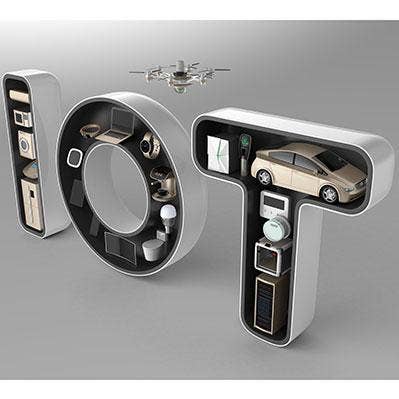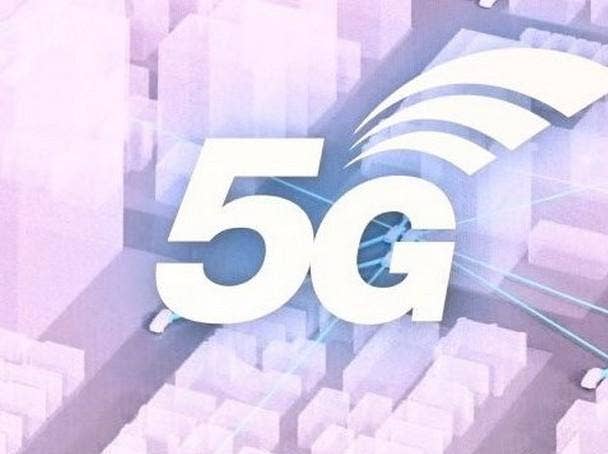The Cutting Edge: 8 Trends Future-Minded Solution Providers Should Watch
Solution providers with an eye toward the future know that edge computing is going to impact every corner of our lives, and they also know that the time is now to get in on the action. Here are eight key opportunities solution providers can leverage, from security to IoT as a service to distributed storage and more.

If the last two-plus years of creatively supporting unexpected IT use cases in the midst of a global pandemic has taught the industry anything, it’s that the network edge is where the action is.
Businesses are searching for new ways to provide a more responsive end-user experience while preserving network performance. Bringing processing closer to the user through edge computing allows for quicker and more efficient operations, said Mike Pittman, founder and CEO of solution provider Connected Solutions Group (CSG).
Richmond, Va.-based CSG is betting big on all things edge. The company’s mission is to help customers adopt edge processing, Pittman said, because edge computing is becoming increasingly influential in smoothing out the subtle realities of daily operations for many businesses.
“The real power of the edge is when it reaches normalcy in your daily life,” he said. “And we’re just scratching the surface there.”
According to research firm IDC, worldwide spending on edge computing is expected to reach $176 billion in 2022, an increase of 14.8 percent over 2021. Enterprise and service provider spending on hardware, software and services for edge solutions is forecast to sustain this pace of growth through 2025 when spending will reach nearly $274 billion, according to IDC.
It’s safe to say that solution providers shouldn’t sleep on these emerging edge opportunities.
For starters? Security. High-profile breaches and ransomware attacks have long made the news and have been on solution providers’ radars. But thanks to the intelligent edge, the attack surface just gained a potential plethora of new entry points.
Meanwhile, 5G will play a pivotal role in supporting brand-new edge and IoT use cases, such as autonomous vehicles, factory automation, remote health care and patient monitoring, and smart buildings and stadiums, according to IDC. Solution providers say that the link between 5G and edge computing can be boiled down to latency. The fifth-generation global wireless technology promises to fuel innovation at the edge by enabling more data collection and faster processing than ever before.
“That’s what everybody’s looking for as we head toward this 5G revolution. Edge is going to help bring the performance of 5G to the masses,” Pittman said.
Still in its infancy, the edge computing market is being impacted by a number of factors, including growth in IoT, distributed storage, AI, private networking and hybrid work, to name a few. Here are eight trends that will create edge opportunities for the channel in 2023.

1. Continued IoT Market Growth
For enterprise adopters, edge use cases with the largest investments in 2022 include manufacturing operations, production asset management, smart grids, omni-channel operations, public safety and emergency response, freight monitoring and intelligent transportation systems. Use cases that will see the fastest spending growth from 2020 to 2025 include public infrastructure maintenance, network maintenance, anatomy diagnostics and augmented-reality-assisted surgery, according to IDC.
What’s more, the research firm expects hardware and services spending will account for 85 percent of all edge spending in 2022 with the remainder going to software. Hardware spending will be led by investments in edge gateways, which require low-power components designed for running limited or single functions in environments where power and cooling availability is limited. In other words, this is the perfect gear for many IoT environments.
For CSG, IoT is a big part of its future, Pittman said. The solution provider is launching a sensor division and an IoT endpoint management platform, which Pittman said is crucial for getting actionable data into the hands of customers. And that’s just the beginning, he added.
“We’re developing the platform, and we are absolutely bundling solutions around it every day,” he said.

2. The Case For IoT as a Service
First comes IoT, then comes IoT as a service. The emerging trend is an important one that solution providers said will help increase IoT adoption. That’s because IoT as a service presents an attractive buying model for customers and a way for the channel to create a winning template for secure IoT use cases that can be scaled up or down easily.
Altaworx, a Fairhope, Ala.-based solution provider that was recently named to CRN’s 2022 IoT Innovators list, seized on the IoT opportunity early. Then, the company’s CEO, Rickie Richey, challenged his employees to look at IoT through an as-a-service lens.
Richey and his team have been busy in recent years developing an IoT platform. They started by creating an algorithm that allowed Altaworx to bill customers based on consumption of AT&T’s—and now, T-Mobile’s—LTE services if a customer failed over to cellular connectivity. The platform has since grown way beyond its initial scope, Richey said.
“I said to my company, ‘Look, I want you guys to go back and think about how somebody could build a managed service with this platform,’” he said.
Today, the Advanced Management Operations Platform (AMOP) is a tool that allows users—namely, other solution providers as well as enterprises—to fine-tune how their end customers manage and use data. The platform offers features such as packet filtering and private WAN services and lets users build customized business rate plans that can be throttled by the partner to decrease the risk of expensive overage fees. AMOP integrates with the Cisco Jasper platform for IoT cellular connectivity management.
The mature platform counts some of the country’s largest solution providers as users, Richey said.
One California-based solution provider that’s using AMOP handles LTE failover and Plain Old Telephone Service (POTS) line replacements for service provider giant Lumen Technologies, the company’s largest customer. Still another AMOP customer, business LTE provider For2Fi, is using the platform to enable cellular as a primary internet connection for retail environments.
“We’re trying to get to where this becomes a platform that someone can use to manage all their customers and all their SIMs, whether they bought them from us or they bought them directly from AT&T. So now, they could either do a managed service with their SIMs or [our] SIMs, and it doesn’t really matter,” Richey said. “That’s what we’re really going to be pushing hard for in the next 12 months—building IoT as a managed service.”

3. 5G Gains Ground
Solution providers say 2022 was the year that 5G went from an exciting prospect to a mainstream offering. Carriers have been diligently building out their footprints, which are now ready for prime time in many areas of the U.S. 5G can enhance edge computing applications by reducing latency, bettering application response times and improving businesses’ ability to collect and process data.
The global 5G services market size was valued at $48.25 billion in 2021 and is expected to expand at a compound annual growth rate of 56.7 percent from 2022 to 2030, according to Grand View Research.
Small businesses and rural environments that have been relying on LTE are already starting to enjoy the benefits of 5G, while some enterprises are even willing to test and trial 5G as their primary form of connectivity for certain applications. It’s a request that CSG’s Pittman said he and his team are running into more and more every day.
“It’s a wireless solution that is relatively easy to manage, and they can get the signal from the air instead of running cable and wire everywhere. They’re all about it—they just want to see it work,” he said.
Altaworx’s Richey said 5G represents a new connectivity option for customers that may have a challenging location that can’t be reached via broadband. “We’re seeing more and more customers that are comfortable with it now,” he said.
Richey said that while the networks are robust enough to handle 5G or LTE failover, 5G-capable devices haven’t quite caught up yet. “There’s still a little bit of hype there. I think devices are still way behind the networks,” he said.

4. The Rise of Edge AI
Tantalus Systems, a smart grid solution provider for public power and electric cooperative utilities, is focused on modernizing utility infrastructure for a more sustainable, decarbonized future for about 260 public power utility providers in North America. That modernization involves empowering customers to leverage data for greater “command and control” at the grid edge, said Michael Julian, CRO of Burnaby, B.C.-based Tantalus.
“Our view is that utilities are going to have a tremendous amount of difficulty in decarbonizing their generation sources and keeping up with the demand associated with electrification unless, of course, they’ve got assets on their grid both digitized and under their control,” he said.
That’s where the company’s partnership with Cisco comes into play.
Cisco brings the IoT edge devices and computing hardware on which Tantalus’ software resides. Combined, the solution gives end users granular visibility and control over distribution and automation assets, including voltage regulators and capacitor banks. Digitizing and managing these assets are becoming more critical, especially as providers look to accommodate renewable energy sources that are not always available, like solar and wind, he said.
Once utility customers have access to data coming in from the edge, AI is playing an important part in providing “actionable intelligence” based on real-time data that might be happening at the meter, substation or distribution asset, Julian said. AI can help detect previously undetectable anomalies, like changes in voltage or issues caused by weather.
“With that AI, we can provide real visibility to a utility to tell them that, for example, ‘Hey, we noticed these anomalies in this part of your service territory at a time when the winds were extremely high.’ Or ‘There’s potentially vegetation overgrowth that’s coming in contact with distribution lines and very likely during the next wildfire, or during the next ice storm, it’s a very likely place for a failure or an interruption that could be avoided,’” Julian said.
By 2027, machine learning in the form of deep learning will be included in more than 65 percent of edge use cases, up from less than 10 percent in 2021, according to research firm Gartner.

5. Taking Networking Private
Many businesses are turning to private networking for their IoT use cases using LTE. The rise in interest around private networking has even sparked a new market opportunity for startups like Celona, an enterprise private 5G provider that was founded in 2020.
Cupertino, Calif.-based Celona has an OEM partnership with Aruba Networks, a Hewlett Packard Enterprise company, that is helping partners include cellular as another connectivity option in their toolkits.
Pier Group, a Jasper, Ind.-based solution provider and Aruba partner that’s using Celona’s offerings, is focused on serving customers in the education and research verticals. The company is connecting, securing and managing new kinds of endpoints for its campus IT customers that are getting requests for IoT “thrown into their laps” every day, said Jason Coclanes, named account manager for Pier Group.
One such use case involves connecting sensors in a cornfield so that a university research group can measure humidity, water and sunlight for its crops. Pier Group is working through the proof-of-concept project with the university, which will rely on private cellular to cover a very large agricultural area, Coclanes said.
“[Private cellular] is a very cost-effective model that can then be used to backhaul to their traditional campus infrastructure. That’s something completely private that is a use case that we’ve started to see pick up reasonably,” he said. “Some of these places are 40 to 50 miles outside of central campus, and there isn’t much of an alternative. These use cases are really paving the way for what will ultimately become an enterprise use case in the future.”
Altaworx for its part uses private networking because many existing IoT management platforms don’t allow users to cull or throttle data or build VPNs back to the customer, Richey said. “We built that into our private network, and it was a little bit of a struggle getting with the carriers where we could recognize the devices and create rules. But that’s getting a lot of traction now because that’s really one of the ways you can secure some of this stuff,” he said.
Getting devices off the public internet is one of the few ways partners can secure IoT endpoints, Richey added. “If you can’t upgrade the software and people don’t want to replace them, send them to a private network,” Richey said.
Private networking initially can be more complicated to build than relying on public connections, but it makes security easier in the long run, he said. Another bonus? Private networking for IoT use cases also can help to unclutter increasingly convoluted corporate networks, he added.

6. Securing The Edge
Solution providers in the past focused on securing the walls of the enterprise campus. It’s an approach that doesn’t work in today’s multi-cloud world with a global workforce, solution providers said.
Vendors and solution providers alike are investing millions in launching and deploying new edge security offerings to combat the growing attack surface spurred by the COVID- 19 pandemic, as well as the uptick in public awareness around ransomware attacks. These offerings include new innovations around Cloud Access Security Broker (CASB) technology, Secure Access Service Edge (SASE), SD-WAN with built-in security, and threat detection, response and prevention capabilities.
Securing WAN edge infrastructure is a big requirement for businesses that are dealing with distributed workloads and users, said Bill Tracy, vice president of technology solutions “
“It’s definitely a hot topic,” he said. “Customers are asking, ‘How do I transform and simplify security? And what do I do with CASBs and SASE to complement that?’”
Edge security involves a blend of security strategies, and planning visibility is key, Tracy said.
“First, we have to help [customers] get their heads around where their traffic and data is going and what we need to secure. It might be a combination of things like secure edge appliances, maybe it’s cloud-based technologies that are sitting more adjacent to where the user is, and sometimes even agent-based technologies at the user level to protect them wherever they may be working from.”
Still, the edge needs the same systems in place for access and control that traditional IT environments require, including multifactor authentication, zero trust and access management, said Joel Grace, senior vice president of IT infrastructure and cloud practice for Sayers, a Vernon Hills, Ill.-based solution provider.
From a networking standpoint, encryption and network segmentation are just as important at the edge, Grace added. “You want to extend the policies that you implement in the core network as far as you can out to the edge,” he said.
With the edge acting as multiple potential entry points into the network, Grace said that securing the edge as IT environments become more complex is “absolutely critical.” It’s something businesses can’t afford to overlook.
“With complexity comes risk,” he said. “You could put up a firewall for a perimeter at your corporate network, but at the edge, you’ve got wireless networks, potentially physical access issues and devices moving around the environment. Edge expands the attack surface for your enterprise, and unless it’s done properly and you get the security teams involved in these edge deployments, it could be very risky and should make any security [professional] nervous.”

7. Distributed Storage
Instead of storing data in one data center or public cloud location, distributed cloud storage is data stored on clusters of storage nodes that are geographically dispersed. The approach is becoming critical for not only edge computing, but local data processing and strict data security and privacy requirements.
By 2025, Gartner estimates that 75 percent of data will be processed at the edge, outside traditional centralized data centers and the cloud, resulting in faster response time and reduced latency.
“There are global brands and global companies that are [saying], ‘We are going to be out of our data center in the next 12 months, and we need a simpler strategy for managing our WAN edge and our branch infrastructure,’” Structured Communication Systems’ Tracy said.
Businesses are concerned about latency and transaction time. “As such, it doesn’t make sense to bring all those users back to a central hub to access the applications that might be located 30 miles away from them in an AWS data center,” he said.
Structured Communication Systems has seen a big revival of the storage market over the last 18 months, Tracy said. Customers are demanding hybrid cloud storage environments that put data close to their end users with network-attached storage for archiving and backup.
“We’ve seen the storage environment really changing over the last seven or eight years with storage declining, but now we’re starting to see a resurgence in that conversation,” he said. “I think what most people are finding is even just a generic [Microsoft] Azure or AWS storage volume is not meeting the needs of their users to access that data.”

8. Hybrid Work
There’s no question that the distributed enterprise is pushing more computing to the edge.
For Structured Communication Systems, 30 percent to 60 percent of customer conversations right now revolve around branch, small-office or home-office user edge strategies, with WAN edge driving the majority of those discussions, Tracy said. “And that’s not us driving the conversation like it was a few years ago. Now, the conversation is coming to us.”
The company is taking a consultative approach to hybrid work and is finding ways around simply doing an “untenable” rip and replace of existing infrastructure for its small-business customers.
“We say, ‘Let’s review what you have in your environment and where do you want to be in three years? Then, what’s the path to get there? How do we maximize what you have? And where do we add strategic solutions to get you on that path?’” Tracy said.
For its customers with existing wireless infrastructure, for example, the next step may be adding SD-WAN for small-office locations, Tracy said.
“We feel like cash flow is becoming a premium in a lot of organizations, but too many people have put off projects. Now, they just have to do it.”